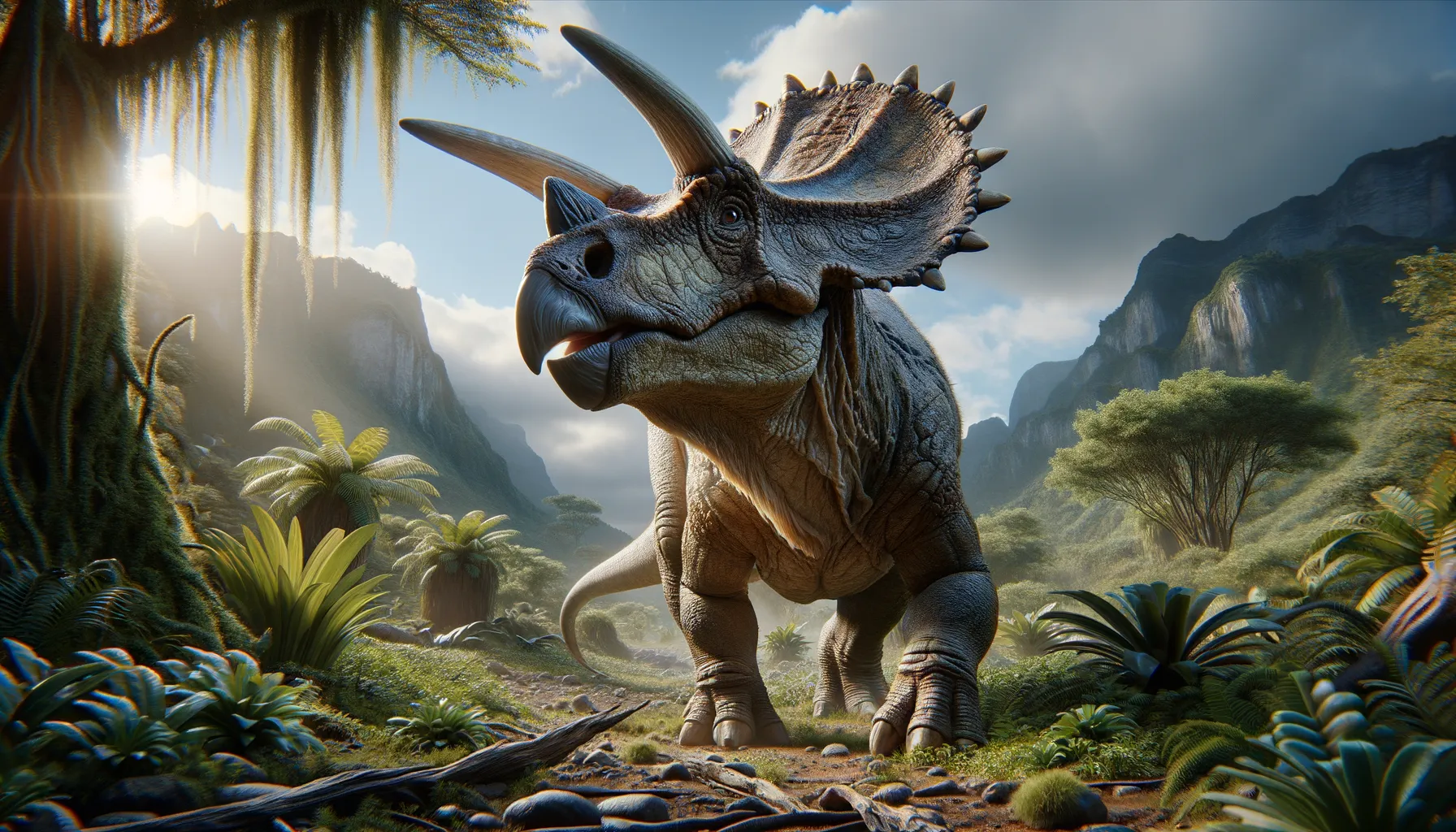
Turanoceratops
A horned highlight of the Asian Cretaceous.
Period
Cretaceous
Length
Estimated 7.5 feet long.
Height
Around 3 feet tall at the hips.
Weight
Approximately 1 ton.
Turanoceratops was a horned dinosaur that roamed Central Asia approximately 90 to 65 million years ago. Part of the Ceratopsidae family, it shared anatomical features with the famous Triceratops. With its distinctive frill and beak, Turanoceratops was a plant-eating dinosaur that thrived in the rich ecosystems of the Late Cretaceous period. Its discovery in Uzbekistan has provided valuable insights into the diversity and geographical range of ceratopsians.
Diet
Turanoceratops was herbivorous, primarily feeding on ferns, cycads, and other prehistoric plants. Its beak allowed it to efficiently clip vegetation for consumption.
Hunting
As a herbivore, Turanoceratops did not hunt other animals. Instead, it foraged for plants and used its keen sense of smell to locate food sources.
Environmental challenges
Turanoceratops faced changing climates and shifting landscapes during the Late Cretaceous. Droughts could have reduced available food sources, affecting its diet. Additionally, predators such as theropods posed a threat, requiring it to rely on its horns and frill for defense. The competition with other herbivores for food and resources also shaped its survival strategies.
Speed
Relatively slow due to its sturdy build.
Lifespan
Estimated to live for around 20-30 years.
First discovery
Discovered in Uzbekistan in the late 20th century.
Fun Facts
- Turanoceratops is a dinosaur that lived around 90 million years ago during the Late Cretaceous period.
- This dinosaur is known for its distinct horns and frill, resembling its more famous cousin, Triceratops.
- Fossils of Turanoceratops were primarily found in what is now Uzbekistan, an area that was once part of a large desert landscape.
- Turanoceratops is believed to have been an herbivore, feeding mainly on the lush vegetation of its time.
- Unlike Triceratops, Turanoceratops may not have had a full bony collar around its head, making it unique among horned dinosaurs.
- The name Turanoceratops means Turan's horned face, reflecting its discovery in the central Asian region of Turan.
- Although less known than some of its relatives, Turanoceratops provides important insights into the evolution of horned dinosaurs in Asia.
Growth and Development
Juveniles likely grew rapidly to reduce vulnerability to predators. Fossil evidence suggests that they developed their distinctive frills and horns gradually as they matured. The growth rings in bones indicate periods of faster growth and dormancy, possibly linked to environmental factors such as food availability.
Habitat
Turanoceratops lived in a variety of environments, ranging from floodplains to woodland areas. It was well-adapted to regions with diverse plant life. Proximity to water sources was crucial, as it allowed for access to lush vegetation and hydration. The presence of coniferous trees would have provided ample food and shelter.
Interaction with other species
Turanoceratops coexisted with a variety of other dinosaurs, both herbivorous and carnivorous. It might have engaged in defensive behaviors against predators in pack situations. The competition for resources with other herbivores might have led to occasional conflicts. Fossil impressions suggest that they might have traveled in groups enhancing their collective defense against threats.
Natural lifespan
Turanoceratops could naturally live around 20-30 years.
Reproduction
Egg-laying reptiles, Turanoceratops likely had nests. Maintaining parental care or guarding behavior might have been a part of their reproductive strategy. Hatchlings were probably vulnerable and relied on hiding strategies for survival initially.
Social behaviour
Turanoceratops might have exhibited some social behaviors, such as group living to deter predators. Display behaviors, including frill movements, could have been used for communication. Mating rituals possibly involved physical displays and vocalizations to attract mates.
Fossil locations
Fossils of Turanoceratops have prominently been located in Uzbekistan. These findings contribute significantly to understanding ceratopsian dinosaurs in Asia. The limited fossil distribution reflects both the challenges of paleontological digs in the region and the specific historical range of the species. These discoveries have encouraged further explorations into Central Asian dinosaur species.
